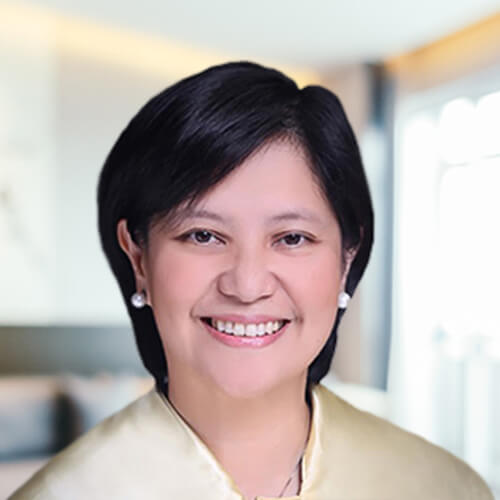The Different Faces of Diabetes: Its Terms, Types and Other Info
With diabetes mellitus (DM) ranking high among the world’s most common non-communicable diseases (NCD) and its prevalence rising only in the past decades leading to the demise of so many across the globe proves the need to work on the enduring lack of education about its management and prevention. To start, it is essential to establish the terminologies.
- Diabetes mellitus or diabetes is an umbrella term for chronic and metabolic diseases that mainly present with increased blood sugar (or blood glucose). There are many types of DM, and this article highlights two classifications: Type 1 (T1DM) and Type 2 (T2DM).
- Pre-diabetes, the stage before Type 2 DM, will be a recurring term in this article as it is crucial to catch Pre-diabetes before it progresses to Type 2 DM.1
- Insulin, a vital hormone in the realm of DM, regulates the metabolism of carbohydrates, fats, and proteins by facilitating the absorption of glucose from the blood. In the case of a person diagnosed with DM, wherein there is no insulin or low insulin, the body experiences a metabolic disorder marked by increased blood sugar. Persons with DM can, but not always, present with the three Ps: polyuria (increased urination), polydipsia (increased thirst), and polyphagia (increased appetite).
The types of DM are classified by their pathophysiology1:
- Type 1 DM (T1DM) – also coined “juvenile diabetes” or “childhood-onset diabetes”, a type of DM usually diagnosed in patients who are in the childhood or teenage stage. These young patients have no insulin due to the inability of the pancreas to produce the hormone which makes persons with T1DM rely on daily doses of insulin. The cause of T1DM is said to be either autoimmune wherein the body attacks the beta cells in the pancreatic islets leading to the inability to create insulin, or idiopathic which means there is no known cause. T1DM is also known to be inheritable.2
- Type 2 DM (T2DM) – known as “adult-onset diabetes”, is a type of DM where the cells cannot uptake sugar from the blood due to insulin resistance. Persons with long-term and poorly managed T2DM may progress to lacking insulin due to beta-cell exhaustion. Among the risk factors for T2DM are genetic health history, being overweight or obese, and having a sedentary lifestyle.3 Persons under these categories may possess excess body fat that can trigger insulin resistance. As the body becomes resistant to insulin, sugar builds up in the bloodstream, which can perpetuate more insulin resistance.
Pre-diabetes – The phase before T2DM, occurs when a patient has elevated blood sugar but is not high enough to be considered T2DM. At this stage, patients are advised to improve their lifestyle and habits to prevent progression into T2DM. Persons in the pre-diabetes stage may present with obesity and other related blood markers, such as dyslipidemia and hypertension. Together with the risk of progressing to T2DM, a patient is also at risk for cardiovascular disease (CVD).
There are three interrelated processes that balance our body’s blood glucose levels:
- production of glucose either through glycogenolysis or gluconeogenesis
- the utilization of the tissues of the body of that glucose
- insulin secretion, which is accomplished by the beta cells in the pancreas4
The presence of glucose causes the pancreas to release insulin, which then increases the uptake of glucose from the blood and into peripheral cells that can be used in bodily functions. For persons in the pre-diabetic stage, either the pancreas diminishes insulin release, or the tissues become resistant to the released insulin; or both, which leads to glucose build up in the bloodstream. In persons with T2DM, the further decrease of insulin and increased resistance of the body to insulin lead to a swift rise in glucose or blood sugar. This leads to the conclusion that T1DM, T2DM, and pre-diabetes are primarily diagnosed by fasting blood sugar.
To test for the fasting blood sugar, a blood sample will be taken following an overnight fast (no caloric intake for a minimum of 8 hours and a maximum of 14 hours). Below is a table outlining the thresholds for normal, pre-diabetes, and diabetes. (Note that fasting blood sugar is tested at least twice to confirm the results.)
Table 1. Classification based on Blood Sugar Level (ADA, n.d.)
| Fasting Blood Sugar | |
|---|---|
| < 100 mg/dL (80-99 mg/dL) | Normal |
| 100 - 125 mg/dL | Pre-diabetes |
| >/=126 mg/dL | Diabetes |
Persons who should be routinely tested for diabetes:
- aged 45 or older
- overweight or obese
- with a family history of diabetes mellitus
The worldwide prevalence of T2DM has quadrupled from 108 million in 1980 to 422 million in 2014. With the 2019 World Health Organization death tally for T2DM related deaths at 1.5 million and around 33,290 for Filipinos aged 30-70 years old, detecting diabetes at pre-diabetes stage is crucial to adjust lifestyle habits and prevent it. There are many well-established ways in managing and even preventing the onset of T2DM, such as having a balanced diet, regular physical activity, and smoking cessation.
Generally, prognosis is good for patients with DM who manage their conditions well. Following the doctor’s and RND’s orders usually lead to few complications. On the other hand, poor management of DM can lead to CVD, the leading cause of death for persons with DM.6 The prognosis can also be poorer if persons with DM experience strokes and other secondary conditions.
Lifestyle Adjustments for Managing DM
As insulin therapy is for managing T1DM, metformin or other biguanides is for T2DM. Apart from these pharmacological interventions, doctors and RNDs recommend shifting to a healthier lifestyle: regular physical activity, healthy meals, regular monitoring of blood sugar, enough sleep, and stress management. In planning meals, persons with DM are advised to consume a low sugar, low fat, and low salt diet to not only keep blood sugar in check but also prevent further complications such as CVD, blindness, and lower limb amputation.7
Adjusting a lifestyle can be idealistic and the best advice would be to eat in moderation. With patients being more likely to follow dietary guidelines when not feeling restricted, it would be strategic to advise them to eat less than not to eat at all. While moderation is key to meet the patient halfway, some foods have neither nutritional value nor benefit for a patient with DM, such as sugar-sweetened beverages and soft drinks. For these, the situation calls for substitutes. It is advisable to ask patients with DM to consume more high fiber and whole-grain foods as well as regulate fat (i.e., better to consume unsaturated fat than animal fat), protein intake (in general, protein is good because it is filling while not causing a spike in blood sugar) and avoid alcohol as much as possible.
Meal Planning for Persons with DM: Its Methods
- Plate method – The plate method involves allocating space for food groups in a plate. Non-starchy vegetables take up half the plate, one quarter is for carbohydrates, and the other quarter is for lean protein.8 The Philippines has its own version of this method called Pinggang Pinoy, recommending similar proportions of each food group.
Figure 1. Plate Method (CDC, 2021)
Figure 2. Pinggang Pinoy (Department of Health, n.d.)
- Counting carbohydrates – By collaborating with a nutritionist-dietitian, this method is an efficient way to monitor daily carbohydrate intake and insulin dose; thus, preventing sudden spikes in blood sugar. The computation for the number of required carbohydrates per meal in a day and the target blood sugar all depends on the age, weight, and activity level of the patient.10
- Noting the GI and GL
- Glycemic Index (GI) – is a rating system of carbohydrate-containing foods based on how quickly they can raise blood glucose. For persons with DM or those in the pre-diabetes stage, low-GI foods are better for maintaining blood glucose and high-GI foods are generally avoided. White bread and glucose both have the highest GI ratings (100) and are often used as a basis for comparison in the context of GI.
Table 2. Classification of food based on Glycemic Index (GI) (Trinidad et al., 2010)
| Category | Glycemic Index | Common Examples |
|---|---|---|
| Low GI | 55 or less | Patatas (potato), kasuy (cashew nut), melon (cantaloupe), pakwan (watermelon), carrots, avocado |
Medium GI | 56-69 | Pinya (pineapple), pasas (raisins), saging lakatan (banana lakatan), sotanghon noodles |
| High GI | 70 and higher | Biscuits, sugar-coated donuts, kusinta, puto |
- Glycemic Load (GL) – Compared with GI, which is useful in choosing which foods to eat, GL takes into consideration the portion of food being consumed.12 This makes GL a more accurate measurement with the formula.
Glycemic Load = (amount of carbohydrates in food in grams x GI) / 100.
For some persons with DM, using GI as a tool in choosing food can be highly advantageous and easy, especially for those who already know their diet plans front and back and can utilize the help from manufacturers who put GI labels on their products. On the flipside, GI may be complicated for some, especially those newly adjusting to their diets. The same is the case for GL for new patients since it takes exact measuring and calculation. With no current consensus on whether GI is better than GL and vice versa, both are useful in their respects and comparisons are not necessary. Here, the guidance of an RND becomes highly useful, since they are the best translators of these food-related equations into meal plans that can be fully understood by patients and their caretakers.
RNDs are best to understand the individualized reactions of patients to certain food for GI and GL are not definite in predicting glycemic rise as the patient’s blood glucose level may still rise after consuming low GI food. With human bodies having different biological responses, the effectiveness of food metrics can be limited making the consultations with RNDs more reliable
4. Checking food labels
With the danger imposed by product labels that can be misleading such as “No Added Sugar” even when there is actual sugar content, RNDs and doctors must also advise patients of proper checking of food labels. This is to prevent confusion and even unfavorable outcomes in patients with DM. In the table below, proper interpretation of food labels is discussed.
Table 3. Food Label Description (American Cancer Society, 2020)
| Meaning of Food Labels | |
|---|---|
| "No added sugar" or "Unsweetened" | While there is no sugar added to the product, it may still contain sugars, such as fructose or lactose. In some cases, labels may further elaborate that the product contains 'naturally occurring sugars'. |
| "Low-sugar" | The product contains <5 sugar per 100 g or 2.5 g of sugar per 100 ml. |
| "Reduced sugar" | The product contains 30% less sugar than the standard equivalent product; this label does not mean the product is always low in sugar. |
| "Sugar-free" | The product contains no more than 0.5 g of sugar per 100 g or 100 ml. |
| "High in Salt" | The product contains > 1.5 g of salt per 100 g. |
| "Low in Salt" | The product contains < 0.3 g of salt per 100 g. |
Paying closer attention to the food we eat is a component of an improved lifestyle, especially for patients with DM. It may seem like a steep climb, and so RNDs and doctors must be supportive through this time by giving patients all the information they need.
The Role of Physical Activity in Managing DM
Another important lifestyle component for a patient with DM is physical activity which can be a challenge if a patient is used to being sedentary. In encouraging patients with DM to take up physical activities, it may be helpful to mention that aerobic exercise can train the body to improve its sugar uptake which will lessen insulin resistance. At the start, the activity should be low intensity to remind patients to avoid sudden and dangerous exercises that may injure them, especially along their lower extremities. If the patient wishes to shift to anaerobic exercises, a guided shift must take place.
Monitoring DM Parameters
The usual markers that are routinely monitored in patients are fasting blood sugar and HbA1c (glycosylated hemoglobin). Patients may also be advised to monitor their blood sugar using home self-test kits and because patients with DM and those in the pre-diagnosis stage are prone to develop other NCDs, they are also advised to monitor their weight and cholesterol level. Patients with DM must be reminded that proper monitoring of these signs can help prevent hypertension and the other complications that are related to DM.14
The following are some points for monitoring:
| Points for Monitoring | Frequency |
|---|---|
| 1. Glucose pattern throughout the day | daily |
2. Heart Health Markers a. Blood pressure b. Weight c. Cholesterol Level | regular |
| 3. Kidney Health Markers | regular |
| 4. Eye Health | regular |
5. Foot Health a. Foot exams b. Sensory testing | regular |
| 6. Level of Activity | daily |
| 7. Sleep | daily |
Insulin Dosing Based on Meals
Patients are not only advised to monitor their carbohydrate consumption, but they should also be familiarized with the type of insulin dose (short, intermediate, and long-acting) based on food intake. This is because insulin is needed to manage blood sugar which usually rises after meals. Long-acting and intermediate insulin are taken independent of mealtime, as their onsets take hours and last for extended periods. More focus should be given to the short-acting insulin, which should be taken 30 minutes before a meal. Patients should be advised to avoid eating before the 30-minute interval, as this may decrease the efficacy of the insulin in preventing the rise in blood sugar.15
Table 4. Types of Insulin and its Duration (CDC, 2021)
| Types of Insulin | Onset of Action | Peak of Action | Duration of Action | Generic Names |
|---|---|---|---|---|
| Rapid-acting insulin | 15 minutes | 1 to 2 hours after injection | between 2 to 4 hours | Insulin aspart, insulin glusiline, and insulin lispro |
| Regular or short-acting | 30 minutes | 2 to 3 hours after injection | 3 to 6 hours | Human regular |
| Intermediate | 2 to 4 hours | 4 to 12 hours after injection | 12 to 18 hours | NPH |
| Long-acting | Several hours after | None | Up to 24 hours | Degludec, detemir and glargine |
The average insulin to carbohydrate ratio (I:C) for patients is 1 unit of insulin per 15 grams of carbohydrates. As this may not work for some patients, insulin dosage for mealtimes may have to be adjusted and individualized.
Food-Drug Interaction
There are few notable interactions between medications for DM and foods that can be considered adverse. Alpha-glucosidase inhibitor, which blocks the conversion of complex carbohydrates to simple carbohydrates to prevent a spike in blood sugar, may cause flatulence and diarrhea because it causes the complex carbohydrates to ferment instead of breaking down into simple carbohydrates. RNDs and doctors should keep in mind these possible interactions, among other interactions, to further individualize the treatment plan for their patients with DM.
Managing Complications with Diabetes
To emphasize, patients with DM are also prone to other complications such as CVD and stroke, which makes it vital that management plans consider the prevention of these NCDs both in terms of diet and medication. Patients with DM are not only advised to moderate their consumption of high sugar foods but high sodium (preserved foods, such as canned foods and salted fish) and high fat foods as well.
For pregnant women who develop gestational diabetes, the challenge is usually keeping the blood sugar managed without depriving the baby of nutrients. It’s a balancing act, and RNDs usually need to distribute the caloric allowance for a day across six smaller meals instead of the normal three. This technique is used to avoid blood sugar spikes, which may be encountered if the mother consumes a high-carbohydrate meal.
Tips to promote compliance to diabetic diets:
- Be realistic. The diet plan must be doable for the patient.
- Promote moderation instead of avoidance of certain foods.
- RNDs can promote compliance more effectively by opening in-depth discussions with patients, especially about DM.
Managing DM can be a huge task for patients at the start. Activity changes, food changes, routine checks, insulin self-injections, self-monitoring, plus the calculations for GI and GL may seem new and overwhelming, making it less exciting to manage the plan. Being aware of the struggle, it is the job of the doctors and RNDs to encourage and help the patients transition into a new way of life. It is also good to take note that persuading patients to avoid certain foods and activities may not be the best way to help. Instructing patients to apply moderation in their lifestyle may be a better way to push and reinforce, thereby preventing other NCDs from occurring. Ultimately, it takes education and patience to help a patient through the initial humps of diabetes.
Know more about dietary management of diabetes mellitus and science-based health solutions through NESTLE HEALTH SCIENCE.
Message from Dr. Aragon for RNDs
“Thank you for taking care of our patients. As a doctor, I get so many questions about diabetes and other diseases from patients, and RNDs are instrumental in helping us and our patients. RNDs help us further explain the diets to the patients, and this is especially important in managing lifestyle diseases because part of managing a disease is knowing about it. I’m truly grateful.”


 Dr. Jimmy Aragon
Dr. Jimmy Aragon















No comments here yet.